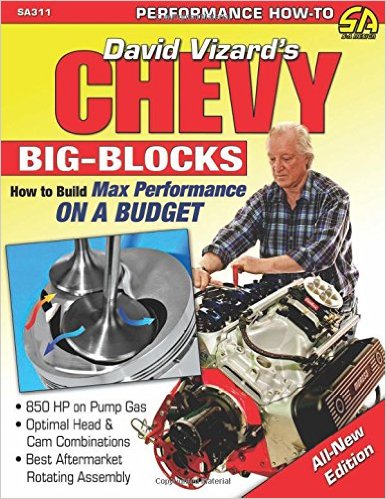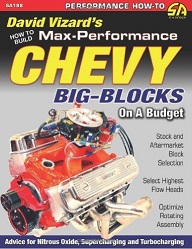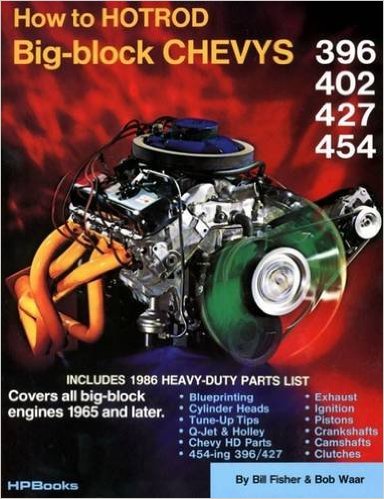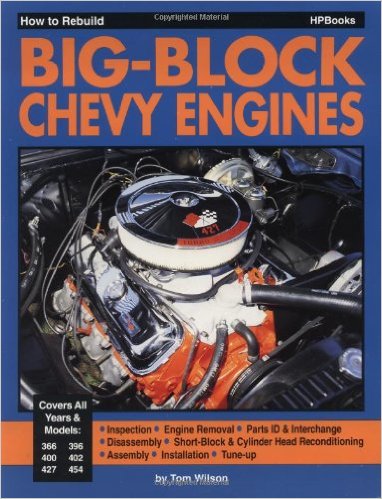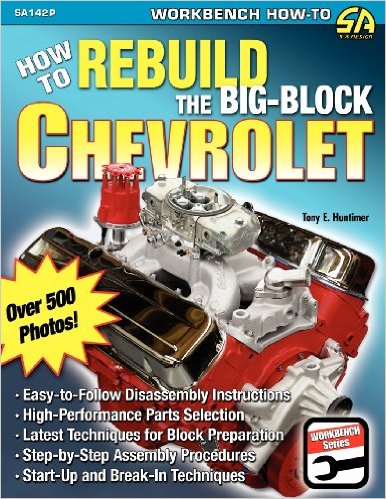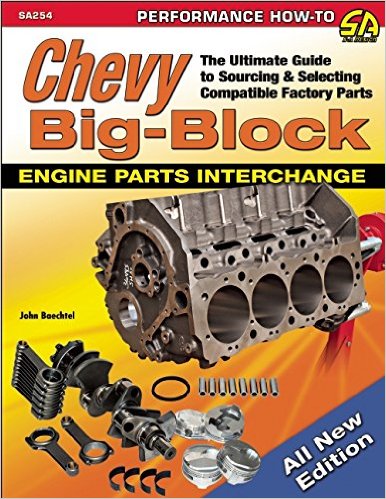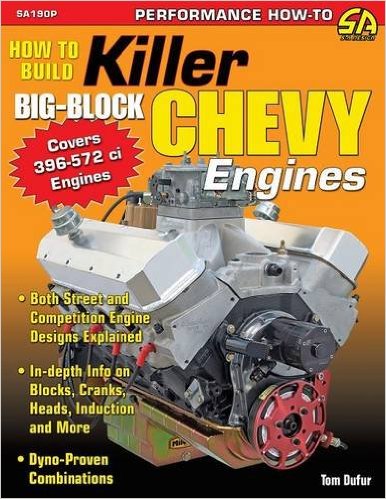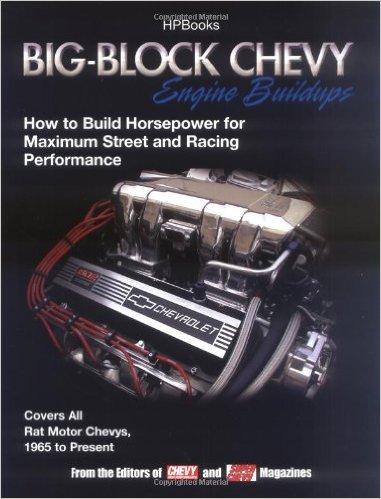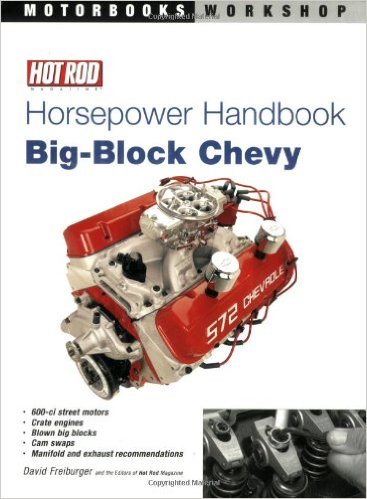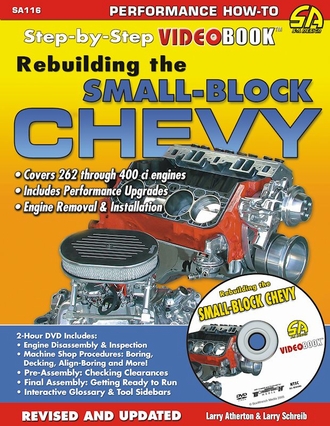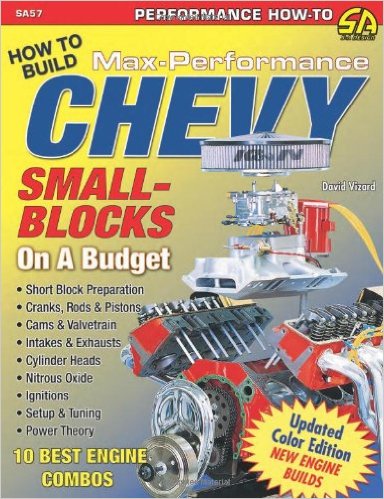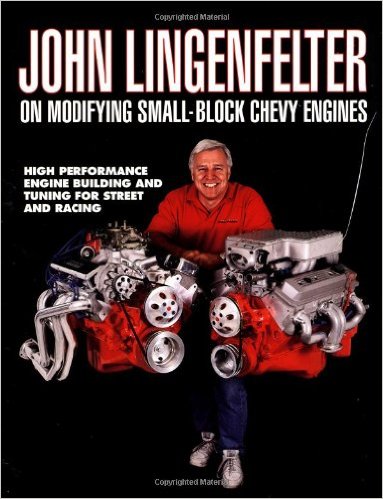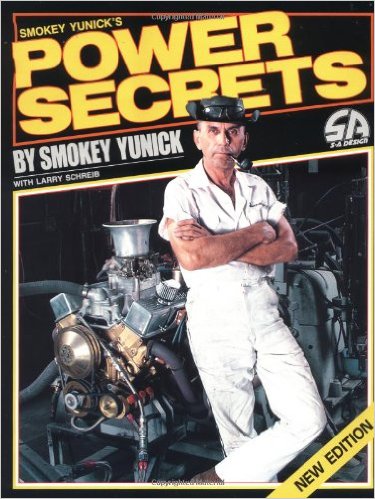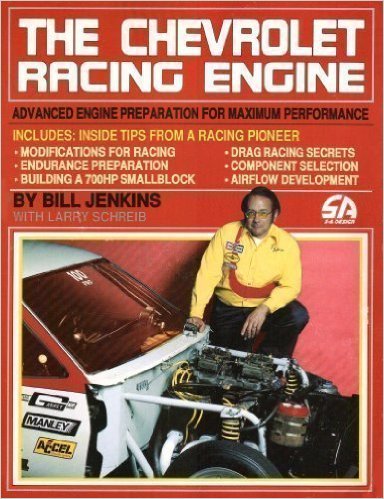I got asked , "what makes a GOOD vs A poor engine combo?"
and without getting into specific combos , too deeply,
lets look at that question
like with most performance parts and applications the critical part of the build,
is generally in selecting the correct components for that particular application,
and in assembling those components correctly with the correct clearances.
its always a multi layered process,
you can,t expect sub-par or weak parts to withstand the shock and torque and rpm/impact loads.
you can,t also expect improperly installed or clearanced or insufficiently lubricated or cooled parts to last very long under loads.
obviously the process REQUIRES the person doing the work, or assembly to do some in depth research,
and have any tools or measuring devices that will be needed.
the first few things I look for in most magazine engine builds, I read about is the use of fairly easy to locate parts, from several known manufacturer's , having a good reputation ,for supplying quality components, and a combo of components that has a semi- reasonable cost to power ratio, and one the average guy can afford to build with easily duplicated parts.
keep in mind theres a HUGE difference in the component selection process and basic goals when building a race engine, where peak power is your main concern, and rebuilds and parts replacement are EXPECTED on a regular basis, vs a high performance engine designed for street/strip use and at least occasional transportation use, where long term durability and rock solid dependability are your main concerns, and you expect to see 100K plus mileage out of any combo, you build
youll also want a parts list from a source that will be around for years, and have access to replacement parts.
Parts that won,t cost a great deal more, than similar components, from other sources, and parts that I can purchase and replace at a later date if necessary.
I also read carefully to see it the articles obviously designed to push or sell particular components , and compare the results to personal experience because , its common for those magazine engine builds to leave out or flat out lie about results at times
I also want to know that the combo will be durable over the long term, and I generally look for a combo that won,t require excessive or expensive custom machine work.A combo that will run on available pump octane fuel,and if the guys building the engine don,t concern themselves with building a stable valve train at the intended rpm range and building very effective lubrication system, and efficient exhaust scavenging , and effective cooling,the combos likely to lack durability!
youll generally find the better engine combos reach peak power about 1500rpm-2000rpm higher than peak torque, but have that peak power curve slightly below critical stress levels (generally under 4200fpm in a chevy V8) and maintain the fairly flat torque curve well over the useable rpm range thus gearing and tire size matching the intended use is also critical
I generally look at the combo , and calculate the peak and average piston speed as its a good indication of stress levels , as anything I'd suggest building should be durable over the long term, if you constantly need to replace components due to wear or parts failure, its not a well thought thru combo.
I want any American V8 I build or recommend duplicating to make or exceed at least 1.2 horse power per cubic inch of displacement, without power adders.
one of the first things youll want to look at is the basic engine block and rotating assembly strength, a bit of research , in the strengths and flaws of each engine family design,the extent of aftermarket parts support, may provide you with info that can save you a great deal of wasted effort
Any good combo should have a torque curve that will be useful in the applications intended rpm range.
On most muscle cars that will place the torque curve peak about 1000rpm-1500rpm lower than the power peak and the peak power a bit below 4200FPM in piston speed
a good many times I see guys build engines that might make very good power , but not in an rpm range that is really useful for their application.
it does little good to build an engine that makes killer power levels at 6500 plus rpms and then stick it in a car with 3.07:1 rear gears and an automatic transmission that shifts at 5500rpm, thus preventing the engine from operating at anywhere near its most efficient rpm band, most of the time!
you will find these threads useful if you read thru and look thru sub links most people don,t take the time to research and plan their engine builds to match the application, and as a result they tend to think they all want 500-600 plus hp from reading the magazine articles , but the truth is that a responsive engine with massive torque in the useable rpm range make for a far better choice if the cars street driven, now thats not saying you can,t have both impressive horsepower and a great torque curve but just keep in mind every choice is a compromise and if you concentrate on building an engine that works in the rpm band you actually use rather than getting mesmerized by peak hp numbers alone youll have better results.
you'll
also need to keep in mind it does no good to build a killer engine that produces 500 plus hp at 6700 rpm and match it to a rear gear ratio and transmission gearing, and shift points or converter stall speed, that keeps the engine in the 1600 rpm-6000 rpm power range 90% of the time, if your smart your not competing for peak hp bragging rights your trying to build , impressive and instantly responsive torque in the usable rpm band.
Yes I've constantly tried to point out the fact that all the components in any engine, and correctly matching the drive train combos gearing, exhaust flow, intake and cam timing along with the fuel/air ratio and ignition advance curve must match the engines displacement and compression ratio, and the intended rpm and intended operational power range.
so many guy fail to understand that concept and as a result install mis-matched components that significantly restrict the power curve and the effective rpm range.
remember its that available torque at a instantly available rpm and how effectively you can access that torque that will allow you to move the car briskly,
the most common mistakes are not selecting the better available , and high flow rate heads that match the engines displacement and intended rpm range and the cam timing, and over camming the engine or not gearing or using the correct stall speed to match the application, is a sure route to reducing the potential performance, potential.
I get lots of guys who have a 307-350-or 383 in their current car that have developed a taste for performance but want something a bit better that the mildly modified engine they currently have,and once you get serious you quickly find that the stock components won,t hold up, or allow you to produce the power levels you really want.
this almost always leads to the purchase of better quality aftermarket components and the frequent use of local machine shops and a rapid education in the costs involved in engine building, followed quickly by drive train and suspension upgrades.
you know I have similar discussions with the guys around here who want to upgrade from their current 383 sbc engines all the time and I usually break out a catalog and a legal pad and start listing a dream sheet with the required components the costs listed, the likely machine work, and by the time we get very far into it it usually becomes rather obvious that we will be some place in the $8K-$12K or higher dollar range by the time we get into a decent dart block,a decent quality forged rotating assembly,then heads from, afr, or brodix ,or profiler heads, and a decent induction system,rockers, etc.dependent of course on what you can use if anything from the current 383 sbc build.
at that point I generally point out that for the cost they can reasonably expect to have built a 505-650 hp engine.
I then point out that in most cases the combo is unlikely to be extremely street drive friendly, and its most likely going to require rear gears and average operational rpm ranges that will not be ideal for long term street use durability.
at that point I generally point out that a big block engine with significantly more displacement can be built for similar cash outlay , that can produce significantly better power per dollar spent.
you might want to read thru these links
http://www.small-block-chevy.com/assemblyspec.html
http://www.brodix.com/uncategorized/ik-dyno
http://www.wallaceracing.com/Calculators.htm
the first few rule's of GRUMPY'S engine assembly
(1) THINK THINGS THROUGH CAREFULLY ,
WRITE DOWN A LIST OF COMPONENTS ,
MAKE DARN SURE THE LIST IS COMPATIBLE WITH,
and AT LEAST SEMI-REASONABLY PRICED WITHIN YOUR BUDGET.
FOR WHAT YOU INTEND TO BUILD AND RESEARCH THE RELATED MACHINE WORK,
RESEARCH CAREFULLY THE COMPONENT INSTALLATION AND INTENDED USE ,
AND POWER BAND THE PARTS WILL REQUIRE
AND FIND AN EXPERIENCED MENTOR.
(2) if in doubt, about how to do anything, on an engine, do some detailed research,
find and compare at least 3-5 valid trust worthy sources info,
read the instructions over again, several time's very carefully
and if available watch several related videos.
(3) if any component will not easily function as designed or requires a good bit of physical force to install ,
or your not 100% sure your doing something CORRECTLY
STOP, FIND OUT EXACTLY HOW THE PARTS SUPPOSED TO FIT AND FUNCTION,& WHY! YOUR HAVING PROBLEMS
theres a reason, and you better verify your clearances are correct , and your following the instructions before you proceed.
(4) never assume the parts you purchased can be used without carefully , cleaning them prior too,
checking the physical condition, verifying clearances and using the correct sealant, lubricants etc.
(5) the quality of a component is generally at least loosely related to the cost to produce it,
and the amount of detailed research and quality machine work that went into its production.
if you got a significant reduced price, theres typically a reason.
it might simply be because a new improved part superseded the one you purchased,
but it might be a far lower quality imported clone with lower quality materials and machine work.
its the purchasers responsibility to research quality.
(6) if you did not do the work personally or at least take the effort to verify it was done correctly and personally verify clearances
ITS almost a sure thing that it was NOT done , correctly, and yes that mandates you fully understand what your looking at,
and how the components are supposed to function and have high quality precision measuring tools.
(7) ITS ALMOST ALWAYS FASTER AND LESS EXPENSIVE , AND PRODUCES BETTER RESULTS IF YOU,
BUY FEWER HIGH QUALITY PARTS & DO THINGS CORRECTLY THE FIRST TIME
ID strongly suggest you keep firmly in mind that doing your math home work and selecting and correctly installing a few high quality well matched components , goes a long way towards building a durable high performance engine and its best to concentrate on maximizing the engines torque curve in the mid rpm range, up to the engines useful rpm red-line, and gearing the drive train to match that intended power band!
If your building a high performance street driven cars engine, ID try hard to build a combo that allows you to stay under about 4200 feet per minute in piston speed, maximizing the engines displacement, getting the dynamic compression close to 8:1 and carefully checking valve train clearances, and geometry.
building an engine with a Quench distance that falls in the .038-.044" range, and matching the cam duration, lift and LSA to the intended power band, and having headers that are designed to amplify cylinder scavenging in that power band, and carefully thinking through and installing a 7-8 quart baffled oil pan and windage screen along with use of high quality bearings, and valve train components, with carefully verified clearances ,goes a long way towards maintaining better long term durability!
YOU'LL tend to get what you pay for! in both parts quality and machine work precision, You'll almost never regret buying and carefully installing a few better quality forged rotating assembly parts or double or triple checking clearances, but you'll frequently wonder "W.T.F. WAS I THINKING"
if you buy cheap components or fail to verify clearances , if your bargain priced parts fail under stress!
do your reading and research home work before you buy parts!
if your not 110% sure of what you need stop and ask questions and get answers from several sources before proceeding on!
think about what your doing before diving in and spending cash!
if a 383 sbc makes 1.2 hp-1.4 per cubic inch of displacement you can expect 460 hp-536hp
if a 540bbc makes 1.2 hp-1.4 per cubic inch of displacement you can expect 648 hp-756hp
READ THROUGH THESE LINK,S
http://garage.grumpysperformance.com/index.php?threads/finding-a-machine-shop.321/
http://garage.grumpysperformance.co...lap-on-factory-headers.3155/page-2#post-66722
HERES A FEW DECENT MAGAZINE BUILDS
SBC
http://www.airflowresearch.com/articles ... 5/A-P1.htm
http://www.airflowresearch.com/articles ... 9/A-P1.htm
http://www.airflowresearch.com/articles ... 8/A-P1.htm
viewtopic.php?f=69&t=4378
BBC
http://www.airflowresearch.com/articles ... /A-P1.html
http://www.airflowresearch.com/articles ... /A-P1.html
http://www.airflowresearch.com/articles ... /A-P1.html
http://www.airflowresearch.com/articles ... 3/A-P1.htm
http://www.airflowresearch.com/articles ... 6/A-P1.htm
do yourself a favor.. buy this book, its full of useful info you can use
www.amazon.com
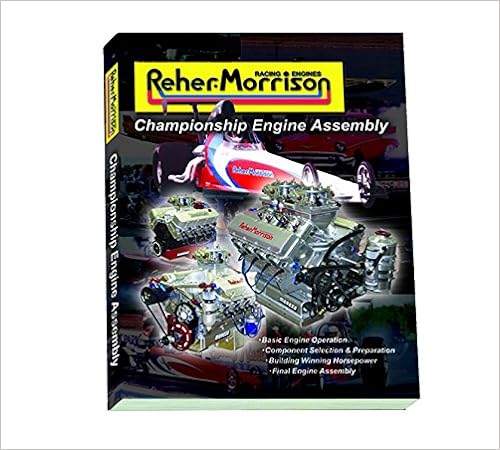
RELATED THREADS
http://garage.grumpysperformance.co...e-required-octane-for-compression-ratio.2718/
http://garage.grumpysperformance.co...ow-to-reduce-its-likely-hood.9816/#post-37278
http://forum.grumpysperformance.com/viewtopic.php?f=52&t=10705&p=46582&hilit=there+tuned+port#p46582
http://garage.grumpysperformance.co...tio-your-feedback-is-needed.10698/#post-46493
http://garage.grumpysperformance.co...the-links-you-posted-grumpy.12020/#post-57517
http://garage.grumpysperformance.co...ty-thats-key-in-building-a-good-engine.11682/
http://garage.grumpysperformance.co...ty-thats-key-in-building-a-good-engine.11682/
garage.grumpysperformance.com
http://garage.grumpysperformance.co...-calculators-and-basic-math.10705/#post-72061
http://garage.grumpysperformance.com/index.php?threads/big-block-chevy-info.710/#post-990
http://garage.grumpysperformance.co...-about-your-potential-dream-bbc-combos.14607/
http://garage.grumpysperformance.co...od-rod-length-too-stroke-info.510/#post-10311
http://garage.grumpysperformance.com/index.php?threads/picking-a-cam-for-street-strip-496-bbc.13384/
http://garage.grumpysperformance.co...esting-info-on-a-big-block-turbo-build.10680/
http://garage.grumpysperformance.co...le-turbo-all-steel-496-bbc-8-81-157mph.10615/
http://garage.grumpysperformance.com/index.php?threads/turbo-big-block.6835/
http://garage.grumpysperformance.co...the-links-you-posted-grumpy.12020/#post-57517
and without getting into specific combos , too deeply,
lets look at that question
like with most performance parts and applications the critical part of the build,
is generally in selecting the correct components for that particular application,
and in assembling those components correctly with the correct clearances.
its always a multi layered process,
you can,t expect sub-par or weak parts to withstand the shock and torque and rpm/impact loads.
you can,t also expect improperly installed or clearanced or insufficiently lubricated or cooled parts to last very long under loads.
obviously the process REQUIRES the person doing the work, or assembly to do some in depth research,
and have any tools or measuring devices that will be needed.
the first few things I look for in most magazine engine builds, I read about is the use of fairly easy to locate parts, from several known manufacturer's , having a good reputation ,for supplying quality components, and a combo of components that has a semi- reasonable cost to power ratio, and one the average guy can afford to build with easily duplicated parts.
keep in mind theres a HUGE difference in the component selection process and basic goals when building a race engine, where peak power is your main concern, and rebuilds and parts replacement are EXPECTED on a regular basis, vs a high performance engine designed for street/strip use and at least occasional transportation use, where long term durability and rock solid dependability are your main concerns, and you expect to see 100K plus mileage out of any combo, you build
youll also want a parts list from a source that will be around for years, and have access to replacement parts.
Parts that won,t cost a great deal more, than similar components, from other sources, and parts that I can purchase and replace at a later date if necessary.
I also read carefully to see it the articles obviously designed to push or sell particular components , and compare the results to personal experience because , its common for those magazine engine builds to leave out or flat out lie about results at times
I also want to know that the combo will be durable over the long term, and I generally look for a combo that won,t require excessive or expensive custom machine work.A combo that will run on available pump octane fuel,and if the guys building the engine don,t concern themselves with building a stable valve train at the intended rpm range and building very effective lubrication system, and efficient exhaust scavenging , and effective cooling,the combos likely to lack durability!
youll generally find the better engine combos reach peak power about 1500rpm-2000rpm higher than peak torque, but have that peak power curve slightly below critical stress levels (generally under 4200fpm in a chevy V8) and maintain the fairly flat torque curve well over the useable rpm range thus gearing and tire size matching the intended use is also critical
I generally look at the combo , and calculate the peak and average piston speed as its a good indication of stress levels , as anything I'd suggest building should be durable over the long term, if you constantly need to replace components due to wear or parts failure, its not a well thought thru combo.
I want any American V8 I build or recommend duplicating to make or exceed at least 1.2 horse power per cubic inch of displacement, without power adders.
one of the first things youll want to look at is the basic engine block and rotating assembly strength, a bit of research , in the strengths and flaws of each engine family design,the extent of aftermarket parts support, may provide you with info that can save you a great deal of wasted effort
Any good combo should have a torque curve that will be useful in the applications intended rpm range.
On most muscle cars that will place the torque curve peak about 1000rpm-1500rpm lower than the power peak and the peak power a bit below 4200FPM in piston speed
a good many times I see guys build engines that might make very good power , but not in an rpm range that is really useful for their application.
it does little good to build an engine that makes killer power levels at 6500 plus rpms and then stick it in a car with 3.07:1 rear gears and an automatic transmission that shifts at 5500rpm, thus preventing the engine from operating at anywhere near its most efficient rpm band, most of the time!
you will find these threads useful if you read thru and look thru sub links most people don,t take the time to research and plan their engine builds to match the application, and as a result they tend to think they all want 500-600 plus hp from reading the magazine articles , but the truth is that a responsive engine with massive torque in the useable rpm range make for a far better choice if the cars street driven, now thats not saying you can,t have both impressive horsepower and a great torque curve but just keep in mind every choice is a compromise and if you concentrate on building an engine that works in the rpm band you actually use rather than getting mesmerized by peak hp numbers alone youll have better results.
you'll
also need to keep in mind it does no good to build a killer engine that produces 500 plus hp at 6700 rpm and match it to a rear gear ratio and transmission gearing, and shift points or converter stall speed, that keeps the engine in the 1600 rpm-6000 rpm power range 90% of the time, if your smart your not competing for peak hp bragging rights your trying to build , impressive and instantly responsive torque in the usable rpm band.
Yes I've constantly tried to point out the fact that all the components in any engine, and correctly matching the drive train combos gearing, exhaust flow, intake and cam timing along with the fuel/air ratio and ignition advance curve must match the engines displacement and compression ratio, and the intended rpm and intended operational power range.
so many guy fail to understand that concept and as a result install mis-matched components that significantly restrict the power curve and the effective rpm range.
remember its that available torque at a instantly available rpm and how effectively you can access that torque that will allow you to move the car briskly,
the most common mistakes are not selecting the better available , and high flow rate heads that match the engines displacement and intended rpm range and the cam timing, and over camming the engine or not gearing or using the correct stall speed to match the application, is a sure route to reducing the potential performance, potential.
I get lots of guys who have a 307-350-or 383 in their current car that have developed a taste for performance but want something a bit better that the mildly modified engine they currently have,and once you get serious you quickly find that the stock components won,t hold up, or allow you to produce the power levels you really want.
this almost always leads to the purchase of better quality aftermarket components and the frequent use of local machine shops and a rapid education in the costs involved in engine building, followed quickly by drive train and suspension upgrades.
you know I have similar discussions with the guys around here who want to upgrade from their current 383 sbc engines all the time and I usually break out a catalog and a legal pad and start listing a dream sheet with the required components the costs listed, the likely machine work, and by the time we get very far into it it usually becomes rather obvious that we will be some place in the $8K-$12K or higher dollar range by the time we get into a decent dart block,a decent quality forged rotating assembly,then heads from, afr, or brodix ,or profiler heads, and a decent induction system,rockers, etc.dependent of course on what you can use if anything from the current 383 sbc build.
at that point I generally point out that for the cost they can reasonably expect to have built a 505-650 hp engine.
I then point out that in most cases the combo is unlikely to be extremely street drive friendly, and its most likely going to require rear gears and average operational rpm ranges that will not be ideal for long term street use durability.
at that point I generally point out that a big block engine with significantly more displacement can be built for similar cash outlay , that can produce significantly better power per dollar spent.
you might want to read thru these links
http://www.small-block-chevy.com/assemblyspec.html
http://www.brodix.com/uncategorized/ik-dyno
http://www.wallaceracing.com/Calculators.htm
the first few rule's of GRUMPY'S engine assembly
(1) THINK THINGS THROUGH CAREFULLY ,
WRITE DOWN A LIST OF COMPONENTS ,
MAKE DARN SURE THE LIST IS COMPATIBLE WITH,
and AT LEAST SEMI-REASONABLY PRICED WITHIN YOUR BUDGET.
FOR WHAT YOU INTEND TO BUILD AND RESEARCH THE RELATED MACHINE WORK,
RESEARCH CAREFULLY THE COMPONENT INSTALLATION AND INTENDED USE ,
AND POWER BAND THE PARTS WILL REQUIRE
AND FIND AN EXPERIENCED MENTOR.
(2) if in doubt, about how to do anything, on an engine, do some detailed research,
find and compare at least 3-5 valid trust worthy sources info,
read the instructions over again, several time's very carefully
and if available watch several related videos.
(3) if any component will not easily function as designed or requires a good bit of physical force to install ,
or your not 100% sure your doing something CORRECTLY
STOP, FIND OUT EXACTLY HOW THE PARTS SUPPOSED TO FIT AND FUNCTION,& WHY! YOUR HAVING PROBLEMS
theres a reason, and you better verify your clearances are correct , and your following the instructions before you proceed.
(4) never assume the parts you purchased can be used without carefully , cleaning them prior too,
checking the physical condition, verifying clearances and using the correct sealant, lubricants etc.
(5) the quality of a component is generally at least loosely related to the cost to produce it,
and the amount of detailed research and quality machine work that went into its production.
if you got a significant reduced price, theres typically a reason.
it might simply be because a new improved part superseded the one you purchased,
but it might be a far lower quality imported clone with lower quality materials and machine work.
its the purchasers responsibility to research quality.
(6) if you did not do the work personally or at least take the effort to verify it was done correctly and personally verify clearances
ITS almost a sure thing that it was NOT done , correctly, and yes that mandates you fully understand what your looking at,
and how the components are supposed to function and have high quality precision measuring tools.
(7) ITS ALMOST ALWAYS FASTER AND LESS EXPENSIVE , AND PRODUCES BETTER RESULTS IF YOU,
BUY FEWER HIGH QUALITY PARTS & DO THINGS CORRECTLY THE FIRST TIME
ID strongly suggest you keep firmly in mind that doing your math home work and selecting and correctly installing a few high quality well matched components , goes a long way towards building a durable high performance engine and its best to concentrate on maximizing the engines torque curve in the mid rpm range, up to the engines useful rpm red-line, and gearing the drive train to match that intended power band!
If your building a high performance street driven cars engine, ID try hard to build a combo that allows you to stay under about 4200 feet per minute in piston speed, maximizing the engines displacement, getting the dynamic compression close to 8:1 and carefully checking valve train clearances, and geometry.
building an engine with a Quench distance that falls in the .038-.044" range, and matching the cam duration, lift and LSA to the intended power band, and having headers that are designed to amplify cylinder scavenging in that power band, and carefully thinking through and installing a 7-8 quart baffled oil pan and windage screen along with use of high quality bearings, and valve train components, with carefully verified clearances ,goes a long way towards maintaining better long term durability!
YOU'LL tend to get what you pay for! in both parts quality and machine work precision, You'll almost never regret buying and carefully installing a few better quality forged rotating assembly parts or double or triple checking clearances, but you'll frequently wonder "W.T.F. WAS I THINKING"
if you buy cheap components or fail to verify clearances , if your bargain priced parts fail under stress!
do your reading and research home work before you buy parts!
if your not 110% sure of what you need stop and ask questions and get answers from several sources before proceeding on!
think about what your doing before diving in and spending cash!
if a 383 sbc makes 1.2 hp-1.4 per cubic inch of displacement you can expect 460 hp-536hp
if a 540bbc makes 1.2 hp-1.4 per cubic inch of displacement you can expect 648 hp-756hp
READ THROUGH THESE LINK,S
http://garage.grumpysperformance.com/index.php?threads/finding-a-machine-shop.321/
http://garage.grumpysperformance.co...lap-on-factory-headers.3155/page-2#post-66722
HERES A FEW DECENT MAGAZINE BUILDS
SBC
http://www.airflowresearch.com/articles ... 5/A-P1.htm
http://www.airflowresearch.com/articles ... 9/A-P1.htm
http://www.airflowresearch.com/articles ... 8/A-P1.htm
viewtopic.php?f=69&t=4378
BBC
http://www.airflowresearch.com/articles ... /A-P1.html
http://www.airflowresearch.com/articles ... /A-P1.html
http://www.airflowresearch.com/articles ... /A-P1.html
http://www.airflowresearch.com/articles ... 3/A-P1.htm
http://www.airflowresearch.com/articles ... 6/A-P1.htm
do yourself a favor.. buy this book, its full of useful info you can use
Reher-Morrison Championship Engine Assembly: Robert Colesworthy: 9780972343282: Amazon.com: Books
Reher-Morrison Championship Engine Assembly [Robert Colesworthy] on Amazon.com. *FREE* shipping on qualifying offers. Reher-Morrison Championship Engine Assemblywww.amazon.com

RELATED THREADS
http://garage.grumpysperformance.co...e-required-octane-for-compression-ratio.2718/
http://garage.grumpysperformance.co...ow-to-reduce-its-likely-hood.9816/#post-37278
http://forum.grumpysperformance.com/viewtopic.php?f=52&t=10705&p=46582&hilit=there+tuned+port#p46582
http://garage.grumpysperformance.co...tio-your-feedback-is-needed.10698/#post-46493
http://garage.grumpysperformance.co...the-links-you-posted-grumpy.12020/#post-57517
http://garage.grumpysperformance.co...ty-thats-key-in-building-a-good-engine.11682/
preventing leaky head bolts/studs
many guys have coolant leaks from studs and head bolts,you don,t need that P.I.T.A. IF your going to use ARP main cap studs THE TORQUE SETTINGS ARE DIFFERENT than the original BOLTS, the STUDS ARE STRONGER, BUT,you might also consider that main studs generally install after cleaning the threads...
garage.grumpysperformance.com
http://garage.grumpysperformance.co...ty-thats-key-in-building-a-good-engine.11682/
Big-Block Chevy OE And Aftermarket Block Variants
Generation Gap: Big-Block Chevy OE And Aftermarket Block Variants By GREG ACOSTA AUGUST 07, 2018 When it comes to big-block engines, there are quite a few variants across multiple manufacturers. However, when you hear the words “big block” with no other qualifier, there is one engine that...garage.grumpysperformance.com
http://garage.grumpysperformance.co...-calculators-and-basic-math.10705/#post-72061
http://garage.grumpysperformance.com/index.php?threads/big-block-chevy-info.710/#post-990
http://garage.grumpysperformance.co...-about-your-potential-dream-bbc-combos.14607/
http://garage.grumpysperformance.co...od-rod-length-too-stroke-info.510/#post-10311
http://garage.grumpysperformance.com/index.php?threads/picking-a-cam-for-street-strip-496-bbc.13384/
http://garage.grumpysperformance.co...esting-info-on-a-big-block-turbo-build.10680/
http://garage.grumpysperformance.co...le-turbo-all-steel-496-bbc-8-81-157mph.10615/
http://garage.grumpysperformance.com/index.php?threads/turbo-big-block.6835/
http://garage.grumpysperformance.co...the-links-you-posted-grumpy.12020/#post-57517
Last edited by a moderator:







